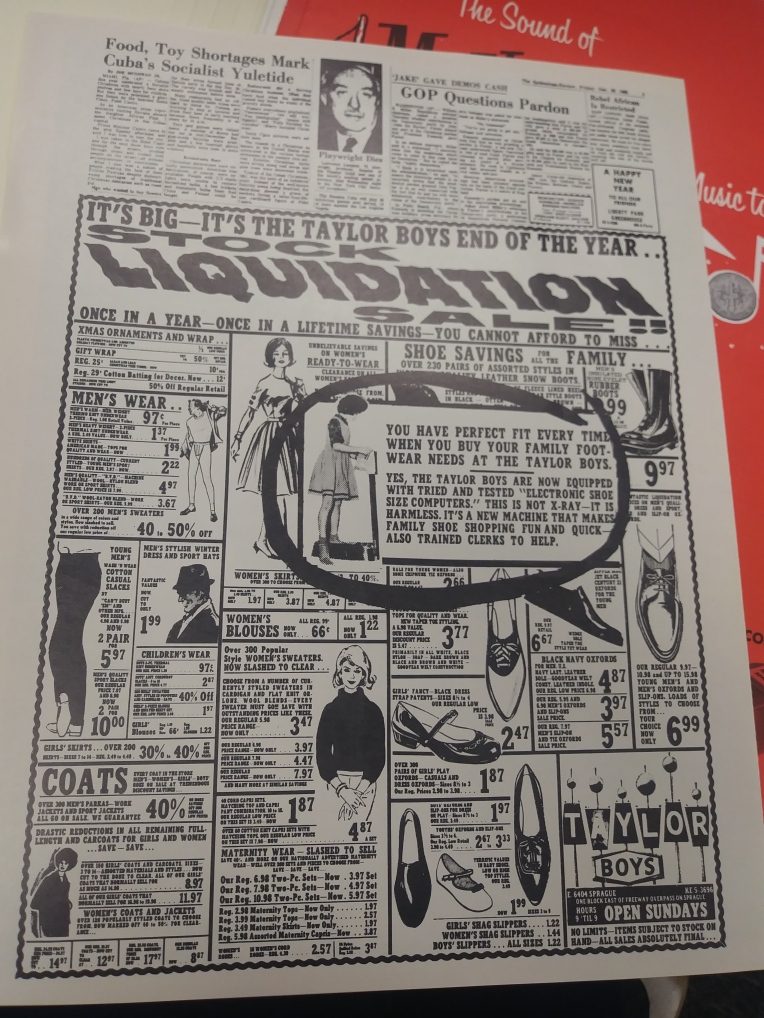I examined papers, diagrams, and patents from the Homer J. Dana shoe computer file last Friday. They were interesting, in a mechanical way, and I was very impressed by how complete the files were. They were not, however, what I was looking for really. Nevertheless, here are some examples that I photographed in the hope that they might prove useful later:
The parts that I found to be the most useful was the ’60s shoe ads, for the purpose of analysis of cost, material, and design:



Notice the mention of the “electronic shoe-size computers”.
Dana, Homer J. Drawings and specifications for shoe size computer 1960-1970, Correspondence with Mike Saad (co-inventor of shoe size computer) 1959-1962, and
Shoe size computer patent correspondence and information (U.S. patent 3173208 A). 1960-1964. The Homer J. Dana Papers, Box 3, Folders 20-21. WSU MASC Library. 27 Oct, 2017










